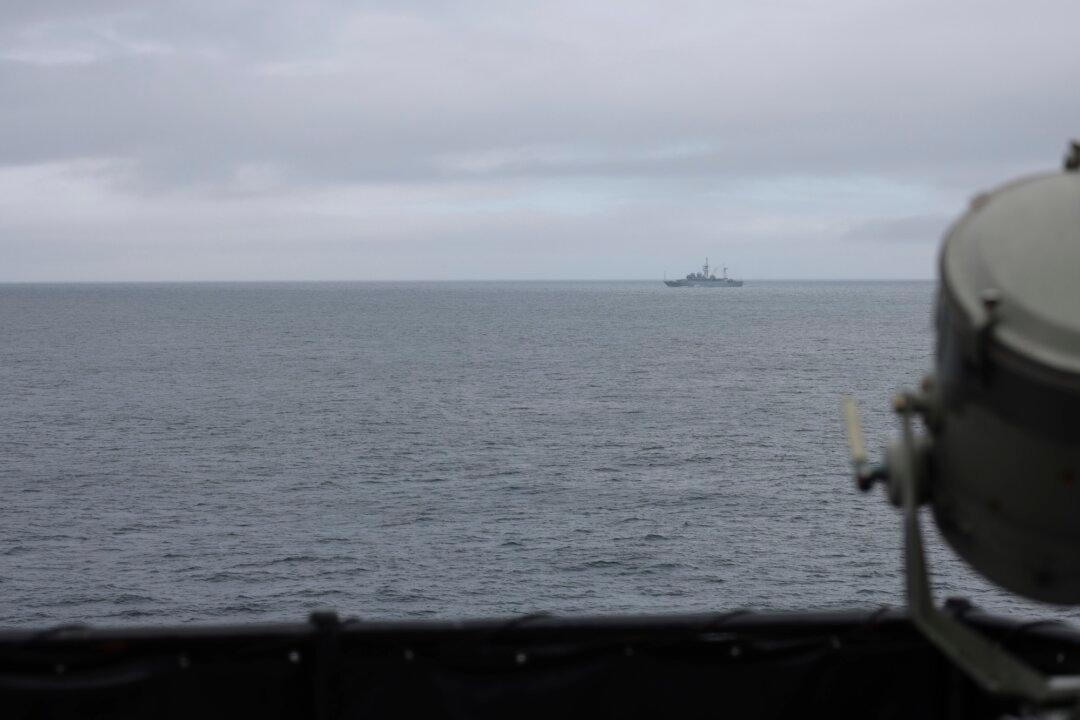A U.S. Coast Guard cutter reported on Aug. 9 an encounter with a Russian military vessel while conducting routine patrols in the region earlier this week.
The crew of U.S. Coast Guard Cutter Alex Haley (WMEC 39) detected the Russian Federation Vishnya-class naval vessel on Aug. 5. It was located about 30 nautical miles southeast of Amukta Pass, Alaska, during their patrol of the Aleutian Islands, according to a statement.
The vessel was “transiting in international waters but still inside the U.S. Exclusive Economic Zone,” which extends 200 nautical miles from the U.S. shoreline, according to the statement.
The aircrew of an HC-130 aircraft from Coast Guard Air Station Kodiak, a long-range surveillance plane designed for search and rescue operations and maritime patrol, provided aerial support and confirmed the presence of the Russian vessel.
The crew of the Alex Haley, a 283-foot medium endurance cutter homeported in Kodiak, Alaska, identified and monitored the Russian vessel without initiating communication as it moved eastward.
“We met presence with presence to ensure there were no disruptions to U.S. interests in the maritime environment around Alaska,” Cmdr. Steven Baldovsky, commanding officer of the Alex Haley, said in a statement.
The Alex Haley’s patrol was part of Operation Frontier Sentinel, a Coast Guard initiative designed to respond to the activities of strategic competitors operating in and around U.S. waters.
The patrol is part of reinforcing the international rules-based order and ensuring that maritime activities comply with established international laws and norms, the statement said.
The monitoring of foreign vessels in the region is not unprecedented, the U.S. Coast Guard statement said.
There have recently been notable encounters involving foreign military activity in and around Alaska.
On July 6, the U.S. Coast Guard Cutter Kimball (WMSL 756) came across four Chinese military ships operating in the Bering Sea, north of the Aleutian Islands.
These vessels were navigating international waters within the U.S. Exclusive Economic Zone and, when contacted by the Kimball, said that they were conducting “freedom of navigation operations.”
U.S. Coast Guard officials said the Chinese ships complied with international rules and norms, and the Kimball maintained surveillance until they departed the area, heading south into the North Pacific Ocean.
This was believed to be the first known instance of Russian and Chinese aircraft jointly operating near the ADIZ.
Russia’s Ministry of Defense confirmed the encounter, describing it as a joint air patrol over the Chukchi Sea, the Bering Sea, and the northern part of the Pacific Ocean.
The North American Aerospace Defense Command confirmed that the foreign aircraft did not enter U.S. or Canadian sovereign airspace and said that the activity was not threatening.
Russian airplanes routinely enter Alaska’s ADIZ.
The Department of Defense has said the Arctic plays a critical role in U.S. national defense and sovereignty.







